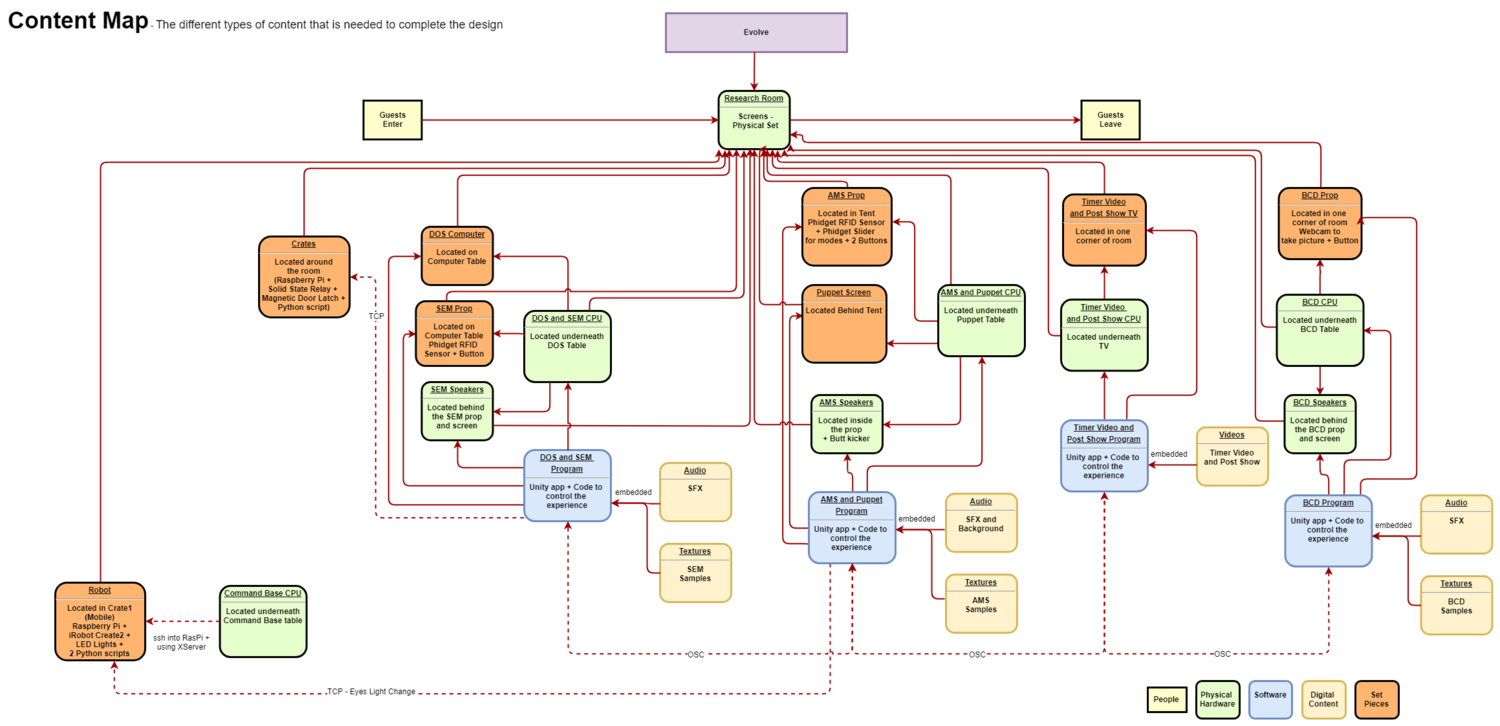Evolve brought together artists, designers, thinkers, makers, writers, and more to help museums foster excitement for natural history topics. Partnering with the Cleveland Museum of Natural History, Evolve created a puzzle-based, narrative-driven experiences for the 21 through 35-year-old demographic. Building off the concept of an escape room, Evolve sought to redefine interactive storytelling in a physical location, combining the best of location-based gaming and immersive theater during the Spring 2019 semester.
My role on the project was that of a creative technologist. I was responsible for handling all the technological needs of the project and seamlessly integrating the technology and the experiences to provide the guests with the best experience possible. I prototyped the physical and digital interfaces of the experience using the Unity game engine and several physical physical computing devices like the Raspberry Pi and Arduino. I also worked on the system diagram for the interactive installation to ensure that the networked technologies functioned as intended.
The story for the experience was that, you as the guest are now thrust into the role of a scientist at the museum and need to work against the clock to uncover the mysteries of a new discovery that have just been made. The theme of the experience revolved around human evolution and how the scientists work. We obfuscated some of the tasks that a scientist undertakes when the receive new samples, like scanning the samples under a microscope, determining the functions that the bone might have served and finally dating the sample to determine what period the sample belongs to. We gamified this activities by creating several puzzles revolving around these fictional machines that the guest could interface with while playing as a scientist and slowly uncover the story that we had created for them.
The above walkthrough video demonstrates the flow of the experience. The guests start the experience by interfacing with a DOS style terminal. We wanted to satisfy the hacker fantasy and created a simple interface where you can only enter a limited number of commands. The terminal acts as a checkpoint to store the progress that the guests are making and allows us to gradually reveal information to them and not overwhelm them. The guest first use this interface to unlock one of the crates, which contains a robot, that is being remotely controlled by an actor. The robot then guides the guests to unlock the other crate and start running tests on the samples found. They start by sorting the samples by using the microscope tool, then the assemble the samples into a full hand or a pelvis and then try to determine the functions and then finally they enter the radiation tent in order to date the samples. The robot also served the dual purpose of providing the guests with in world hints in case they happened to get stuck on a particular puzzle and to increase the emotional impact of the story.
.

The following diagram is the layout of the technology as it was playtested at the Cleveland Museum of Natural History. It shows how the various connections were made and how the various props and interface were laid out throughout the room. The command base was a separate room from where the actor was able to control the robot and monitor the progress the guests were making.

The following image is the content map which gives a summary of all the content flowing through the experience and how all the devices are communicating with each other.

You can read more about the project and our development blog here.